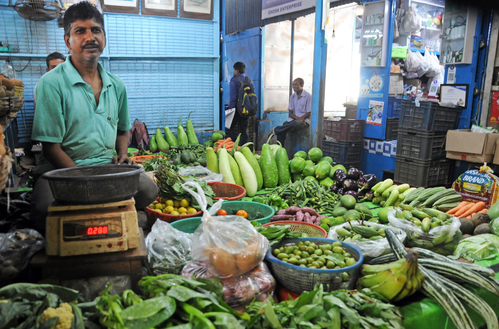Our Terms & Conditions | Our Privacy Policy
India’s headline inflation to average 3.5% this fiscal: Crisil
New Delhi: A Crisil report Wednesday projected India’s headline inflation to average 3.5 per cent this fiscal (FY26) from 4.6 per cent in the last, as healthy agricultural production is expected to keep food inflation in check.
Kharif sowing is up a healthy 4.0 per cent on-year (As of August 8) and adequate soil moisture should benefit the rabi crop as well.
“Assuming geopolitical uncertainties remain under control, Brent crude oil prices are projected to remain subdued at $60-65 per barrel in the current fiscal, which should help contain non-food inflation,” said the report.
India’s retail inflation rate has more than halved over the past year, slipping even below the lower end of the Reserve Bank of India’s tolerance band (2 per cent). It slid to 1.6 per cent in July from 2.1 per cent in June. A year ago, it stood at 3.6 per cent.
“Food saw steeper deflation, while core inflation recorded a sharp decline as the impact of mobile tariff revision wore out. Food inflation stood at -1.8 per cent, the lowest since January 2019, further down from -1.1 per cent in June.
Healthy food production and ample foods stocks are aiding softer prices. Core inflation, too, lent support, sharply falling to 3.9 per cent from 4.4 per cent, led by a substantial decrease in transport and communication inflation. Fuel inflation rose to 2.7 per cent from 2.6 per cent.
“Deeper deflation in vegetables and pulses and easing cereal inflation provided a significant downward support. According to Crisil Intelligence’s Thali Index, the cost of vegetarian and non-vegetarian thalis dropped 14 per cent and 13 per cent on-year, respectively, owing to lower vegetable and broiler prices,” the report mentioned.
“We expect another repo rate cut this fiscal. A cumulative cut of 100 basis points so far, along with adequate liquidity, has ensured a swift transmission downstream. The sharp fall in retail inflation should buoy household purchasing power, particularly in the lower-income segments. The trend also creates room for further monetary policy easing, which should benefit the interest-sensitive consumption segments,” said the report.
IANS
Images are for reference only.Images and contents gathered automatic from google or 3rd party sources.All rights on the images and contents are with their legal original owners.



Comments are closed.